The Firebird

Brief Synopsis
Cast & Crew
William Dieterle
Verree Teasdale
Ricardo Cortez
Lionel Atwill
Anita Louise
C. Aubrey Smith
Film Details
Technical Specs

Synopsis
Herman Brandt, a handsome and egotistical actor, lives in the same Viennese apartment building as Carola and John Pointer and their eighteen-year-old daughter Mariette. One day, as Carola leaves to walk her dog, she is accosted by Brandt, who invites her to visit him in his apartment after everyone has gone to bed. She is completely offended and complains about him to the manager. When Brandt refuses to leave the building, the Pointers decide to move out. While they are packing, Brandt is found dead of a gunshot to the head. Police Inspector Miller discovers that a woman frequently visited Brandt at night, but the concierge swears that no one came from outside. In the building, only the Pointer family contains attractive women. Suspicion first falls on Jolan, the maid, then on Mlle. Mousquet, the governess, but both were out of the building on the crucial night. When Miller questions the Pointers, Carola asks to speak to the Inspector alone. She admits that she visited Brandt but denies killing him. Later, after John deduces that only she could have killed Brandt, she tells Miller that she shot Brandt when he threatened to tell her husband if she refused to go away with him. As he questions her, however, Miller realizes that Carola could not have committed the murder. Then Mariette admits that she overheard Brandt's invitation to her mother. Knowing that the door to his apartment would be open, she visited him. Later, disappointed in his nature, she tried to break off their affair. At gunpoint, he insisted that she marry him, and the gun went off in an ensuing struggle, killing him. Carola begs Miller to let her take Mariette's place, so her life will not be ruined by the scandal, but Mariette is determined to live her own life away from her over-protective mother, and the police take her away to face her trial.

Director
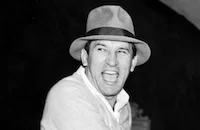
William Dieterle
Cast
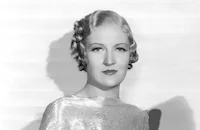
Verree Teasdale

Ricardo Cortez

Lionel Atwill

Anita Louise

C. Aubrey Smith

Dorothy Tree
Helen Trenholme
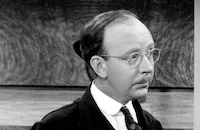
Hobart Cavanaugh

Robert Barrat
Hal K. Dawson
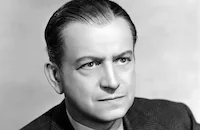
Russell Hicks
Spencer Charters

Etienne Girardot
Florence Fair
Nan Gray
Dick Good

Geraine Greear
Victoria Vinton
Claudia Coleman
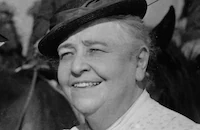
Jane Darwell
Frank Darien
Lucille Ward
Rolf Ernest
Billy Naylor

Tom Wilson
Harry Tyler
Leo White
Oscar Apfel
Bert Roach
Otto Lang
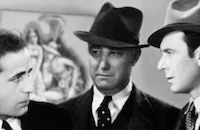
Jack Mower

Wilfred Lucas
Elsa Peterson
William Irving
Art Thalasso
Gordon De Main
Victor De Linsky
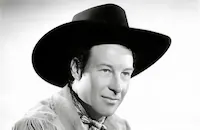
Gordon Elliott
Milton Kibbee
Perry Ivins
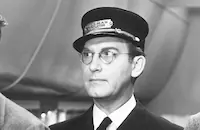
Emmett Vogan

Virginia Gray
Martha Merrill
Doris Atkinson
Crew

Film Details
Technical Specs

Articles
The Firebird
By Richard Harland Smith

The Firebird
Virginia Grey (1917-2004)
She was was born in Los Angeles on March 22, 1917, and was exposed to the film industry at a very young age. Her father, Ray Grey, was a Keystone Cop and acted in several other of Mack Sennett's comedies with the likes of Mabel Normand, Dorothy Gish and Ben Turpin. When her father died when she was still a child, Virginia's mother encouraged her to join the acting game and audition for the role of Eva for Uncle Tom's Cabin, a big budget picture for Universal Studios in the day. She won the role, and acted in a few more pictures at the studio: The Michigan Kid and Heart to Heart (both 1928), before she decided to temporarily leave acting to finish her schooling.
She returned to films after graduating from high school, and after bouncing around Hollywood doing bits for various studios, she hooked up with MGM in 1938. Her roles in her first few films were fairly non-descript: In Test Pilot and Ladies in Distress (both 1938), she did little more than look pretty, but in the following year she had scene-stealing parts in The Women (upstaging Joan Crawford in a delicious scene as a wisecracking perfume counter girl) and as the suffering heroine in Another Thin Man (both 1939).
Despite her versatility (she could handle comedy or drama with equal effectiveness), MGM would cast her in some above-average, but hardly starmaking movies: Whistling in the Dark, The Big Store (both 1941), and Tarzan's New York Adventure (1942). She left MGM in 1943 and became a freelance actress for several studios, but her material as a leading lady throughout the '40s were mediocre: Swamp Fire, House of Horrors (both 1946), and Mexican Hayride (1948) were sadly the more interesting films in her post-MGM period. But by the '50s she was a well-established character actress, appearing in fairly big-budget pictures: All That Heaven Allows, The Rose Tattoo (both 1955), Jeanne Eagels (1957).
In the '60s, Grey turned to television and found work on a variety of hit shows: Wagon Train, Peter Gunn, Bonanza, My Three Sons, I Spy, and several others; plus she also captured a a couple of notable supporting parts in these films: Madame X (1966), and Airport (1970), before retiring completely from acting in the early '70s. She is survived by her sister, Lorraine Grey Heindorf, two nieces and two nephews.
by Michael T. Toole
Virginia Grey (1917-2004)
Quotes
Trivia
The original play by Lajos Zilahy opened in Budapest, Hungary, on 25 February 1932. Jeffrey Dell's English adaptation opened in New York City, New York, USA, on 21 November 1932 and had 42 performances.
Notes
According to the Variety review, Jeffrey Dell's adaptation entitled The Firebird was poorly received in the United States, where it opened on November 21, 1932, but was a hit in London. A French adaptation of Lajos Zilahy's play by Denys Amiel, entitled Cette nuit-la, was published in the June 30, 1933 issue of La Petite Illustration, but was not a source for this film.















